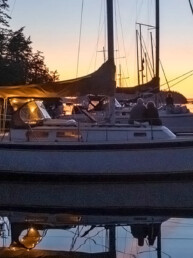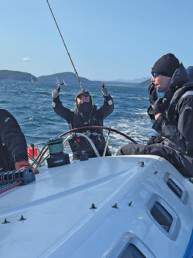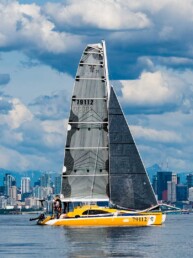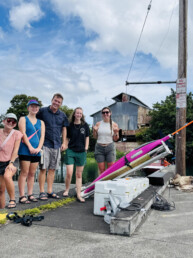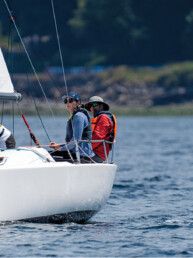In our latest Throwback Thursday we visit a favorite British Columbia Marine Provincial Park—Jedediah Island.
Every time we drop the hook at Jedediah Island, we dream about leaving the modern world behind to try our hand at homesteading. A small island tucked between Lasqueti and Texada islands in the middle of the Strait of Georgia, Jedediah had previously been used for that exact purpose. The island was purchased by the Foote family of Vancouver back in 1890. During their 30 years on Jedediah, they cleared land for a pasture, established an orchard, and built a house at Home Bay.
The 600-acre island changed owners several times throughout the years, and its use varied from homesteading to being used as a summer retreat. Most recently, it was the home of Al and Mary Palmer, who purchased Jedediah in 1949. After 20 years of homesteading the island full time, they sold it to the province of British Columbia and it was established as a Marine Provincial Park in 1995.
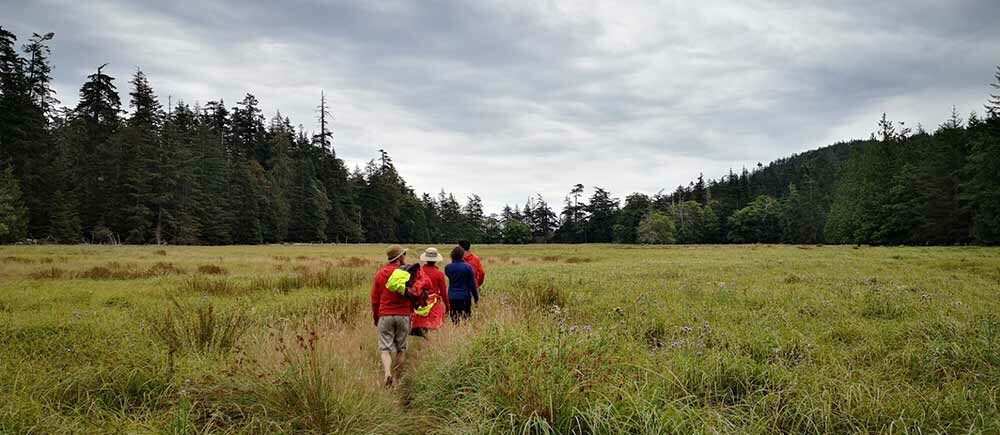
There is still lots of evidence of the Palmers’ and other owners’ lives on the island: the cleared pastures are a bit overgrown now, but walking trails cut through them. The orchards have gone a bit wild, yet the trees are still fruiting. Crumbling buildings are no longer being maintained, so caution is needed when exploring them. And even the descendants of the Palmers’ sheep and goat herds can still be found.
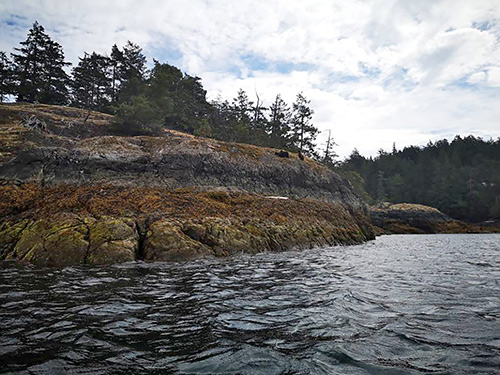
Our friend Leif was the first to tell us about Jedediah. As soon as he mentioned the feral sheep and goat population, I absolutely had to go check it out. Having grown up in Vermont, where the cows outnumber the people, I have a soft spot for farm animals. I was not disappointed. We have seen sheep and/or goats every time we have visited the island. When anchoring, we often spot goats up on the cliffs looking down at us and hear goat kids crying for their mothers as they learn to navigate the rocky terrain. When venturing ashore, the trails are filled with their droppings, so be sure to watch where you step. Keep your eyes peeled for small tufts of sheep’s wool that get caught on low branches of trees and shrubs. They tend to keep their distance, so a close encounter is unlikely, but we often catch glimpses of sheep on the edges of the orchard and pastures.
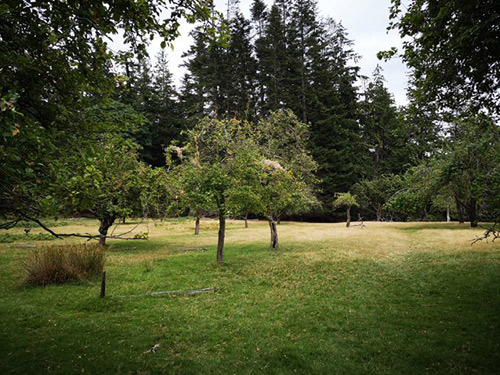
We have been to Jedediah at all different times of year and the orchard almost always has something new to surprise us. In the summer, you’ll see small apples and pears on the craggy and wild-looking apple and pear trees that ripen come fall. We noticed a couple of small plum trees near the path up to the house when visiting in August with my in-laws. A massive walnut tree east of the apple and pear trees drops buckets of nut-filled fruit in the late fall, as we discovered on a chilly visit in November. (Reminder: picking fruit from the orchard is not permitted.)
Trails wind across the island connecting Deep Bay, Home Bay, Codfish Bay, and Long Bay. They are mostly wooded once you leave the area immediately surrounding the house, with some impressive trees towering above you. There are spots tucked amongst the trees that are fenced off with signs posted; research groups are studying the sheep and goats grazing on the island and how that is affecting undergrowth in the forests. The difference of inside versus outside the fence is visibly noticeable and always makes me wonder just how many sheep and goats call Jedediah Island home.
If you’re a climber, we suggest packing climbing shoes and chalk bag for a trip to Jedediah, as there are rocks just begging to be climbed. The island’s rocky terrain has quite a few hidden gems, some of which can require a bit of adventure climbing (“adventure” in this case is code for covered in moss). During the one visit where we actually remembered to bring our gear, we explored some of the short cliffs along the trail from Deep Bay to Home Bay. It was a slow process navigating the crumbly bits, but fun to explore some bouldering problems that likely few others have climbed before.
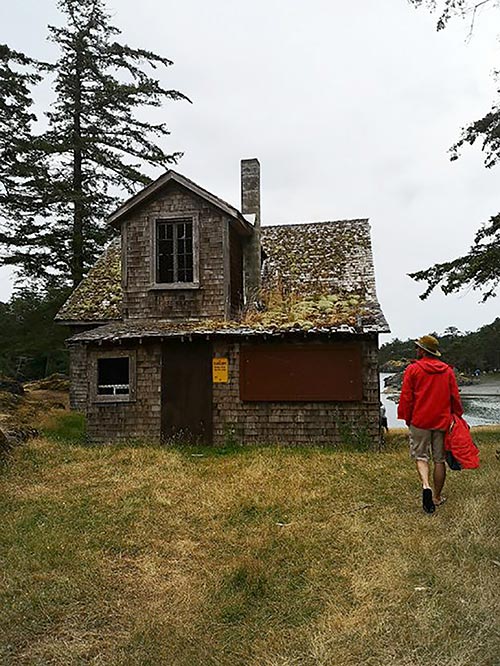
During the height of the COVID-19 pandemic, when crossing the U.S.-Canada border was not permitted or required 14 days of quarantine, we moved our J/40, Velella, from Point Roberts to Nanaimo. Though the drive from our home in Vancouver and taking the ferry to the boat often resulted in a five-plus hour process, the proximity of Jedediah Island to Nanaimo made it a frequent destination for weekend trips.
We brought four friends with us on a visit over the B.C. Day long weekend in August. From Nanaimo, Mother Nature graced us with beautiful sunny skies and perfect wind for a downwind sail to Jedediah. Our friends were all beginners or new to sailing, but were eager to learn and helped us hoist the spinnaker and trim the sails. We made excellent time on the crossing and encountered little other boat traffic on our way.
Given the holiday, we were worried Deep Bay would be full, so we anchored first in Boho Bay, just across the channel from Jedediah on Lasqueti Island. The weather was warm enough to go swimming, but the water was cold enough to immediately want to climb back out and lay in the sun. We putzed around in the dinghy exploring the anchorage (the property is all private surrounding the anchorage, so there’s no shore access), then settled in for cocktails and a delicious dinner. The next morning, after zipping over in the dinghy to check how many boats were in Deep Bay, we hauled up anchor and headed that way to claim a spot.
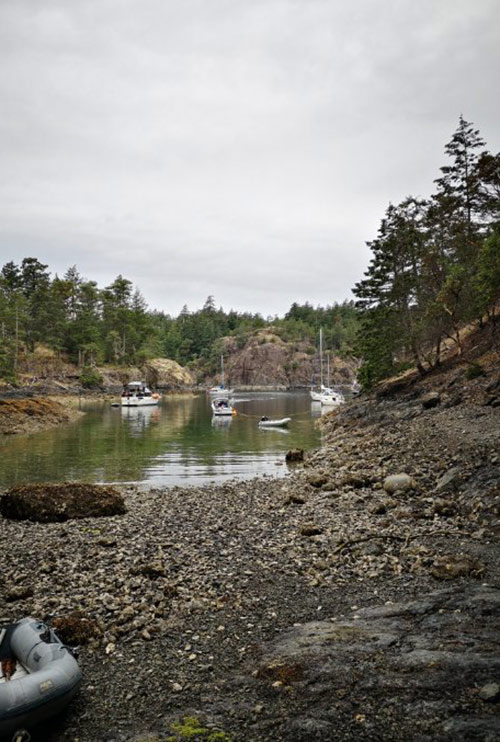
For such a small island, there are a surprising number of anchorages to tuck into, depending on your boat’s draft and the weather. Our boat draws 5 feet, 5 inches and we can anchor in most of them. Two of our favorites are Deep Bay and Codfish Bay. On the northwest end of Jedediah, tucked behind Paul Island, Deep Bay is the only all-weather anchorage on the island. Given its protection, it’s also the most popular anchorage and can fill up during peak seasons. The cliffs along its shores have chains for stern-tying (a must) which are maintained by BC Parks. Cruisers are often packed in like sardines and approximately 12 to 16 boats can squeeze in at one time. Many of the anchorages on Jedediah will require stern-tying, so make sure to have your stern line ready before entering the anchorage.
Codfish Bay, on the eastern side of the island just south of Home Bay, is less popular and you will often have it to yourself or only share it with one or two other boats. The bay is open to the southeast and Circle Island offers some wind/wave protection from that direction, but it could be a bit uncomfortable if it’s really honking. Both anchorages have shore access at the head of the bay that leads directly to the trail network on the island.
Long Bay is an option for boats that don’t draw as much, as it gets quite shallow. It is conveniently located close to a popular camping spot on the island but can be noisy. Like Deep Bay and Codfish Bay, it has a trailhead at the head of the bay.
Both Otter Cove and neighboring Sunset Cove are open to the northwest and are only recommended in settled weather. Similarly, White Rock Bay is another spot to tuck in during settled weather. Boom Bay is shallow, with parts drying at low tide, and is not recommended for anchoring. We’ve heard of people anchoring in Little Bull Passage on the southwest end of the island between Jedediah and Bull Island, but expect some current.
Home Bay is too shallow for most boats and sections of it will dry at low tide, but it’s a great spot to land if you are kayaking or out for a dinghy ride. Another popular camping spot is near the sand beach in Home Bay, across the bay from the house.
An excellent alternative to anchoring directly off Jedediah is Boho Bay, just west of Jedediah on Lasqueti Island. The anchorage is tucked between Lasqueti and Boho Islands and is fairly protected, with only a risk of southeast winds funneling in the mouth of the bay. Jedediah Island offers some protection from southeast wind and waves. It’s a short dinghy ride across to land in Deep Bay or Long Bay for access to Jedediah Island.
Now that Velella is back in Point Roberts, Jedediah Island is just out of reach for these short weekend jaunts that we used to enjoy. But I’m hoping that our next big trip will take us north and allow for a stop there. After all, I need to see how the sheep and goats are faring and discover what other marvels the island has in store.
Lauren Upham and her husband Ches call Vancouver, BC home. They cruise frequently on their J/40 Velella — mostly short jaunts to the San Juan or Gulf islands.

Lauren Upham
Lauren Upham and her husband, Ches, call Vancouver, BC, home. They cruise frequently on their J/40 Velella, mostly around the San Juan and Gulf Islands.


